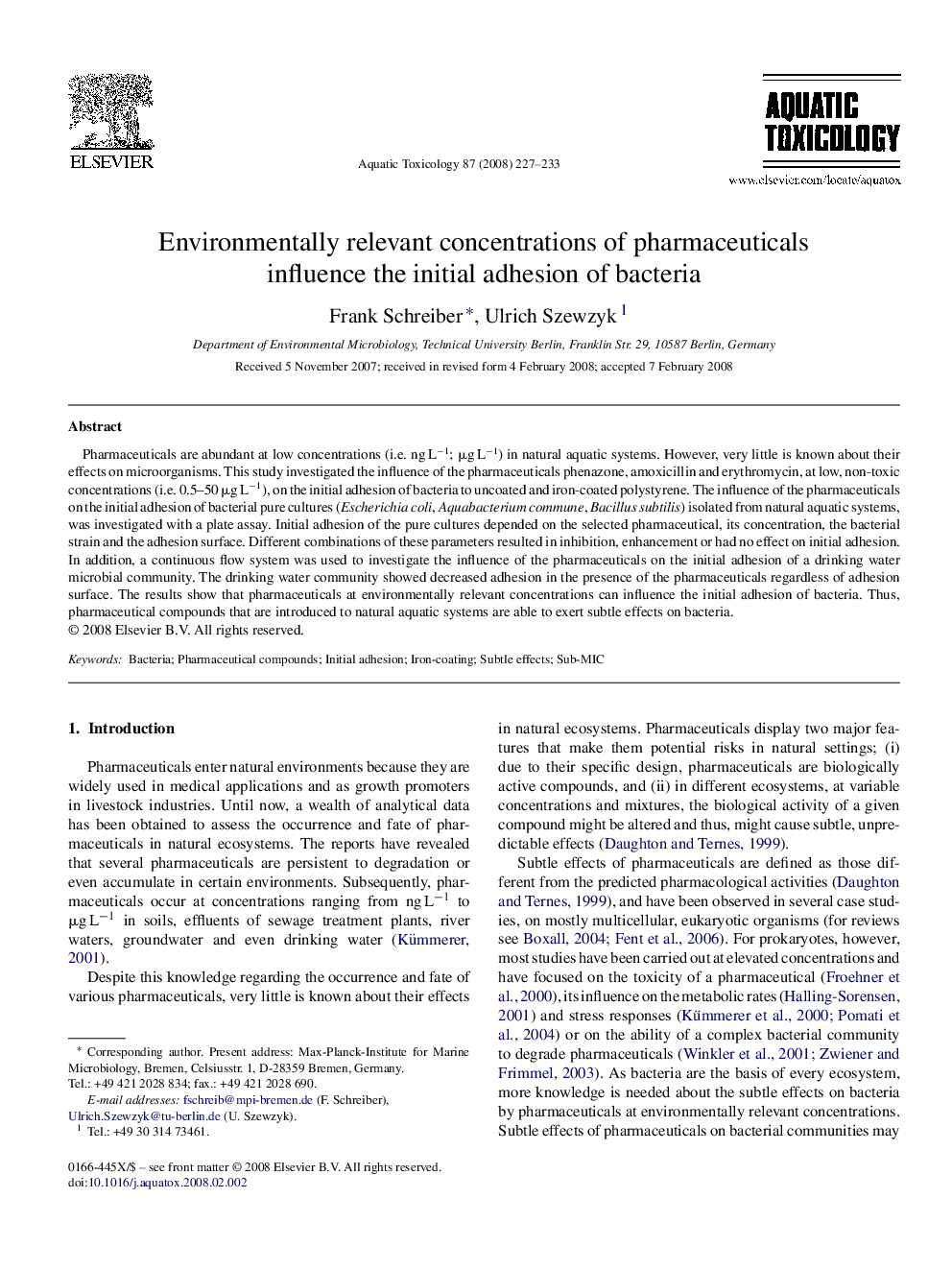| Article ID | Journal | Published Year | Pages | File Type |
|---|---|---|---|---|
| 4530935 | Aquatic Toxicology | 2008 | 7 Pages |
Pharmaceuticals are abundant at low concentrations (i.e. ng L−1; μg L−1) in natural aquatic systems. However, very little is known about their effects on microorganisms. This study investigated the influence of the pharmaceuticals phenazone, amoxicillin and erythromycin, at low, non-toxic concentrations (i.e. 0.5–50 μg L−1), on the initial adhesion of bacteria to uncoated and iron-coated polystyrene. The influence of the pharmaceuticals on the initial adhesion of bacterial pure cultures (Escherichia coli, Aquabacterium commune, Bacillus subtilis) isolated from natural aquatic systems, was investigated with a plate assay. Initial adhesion of the pure cultures depended on the selected pharmaceutical, its concentration, the bacterial strain and the adhesion surface. Different combinations of these parameters resulted in inhibition, enhancement or had no effect on initial adhesion. In addition, a continuous flow system was used to investigate the influence of the pharmaceuticals on the initial adhesion of a drinking water microbial community. The drinking water community showed decreased adhesion in the presence of the pharmaceuticals regardless of adhesion surface. The results show that pharmaceuticals at environmentally relevant concentrations can influence the initial adhesion of bacteria. Thus, pharmaceutical compounds that are introduced to natural aquatic systems are able to exert subtle effects on bacteria.
